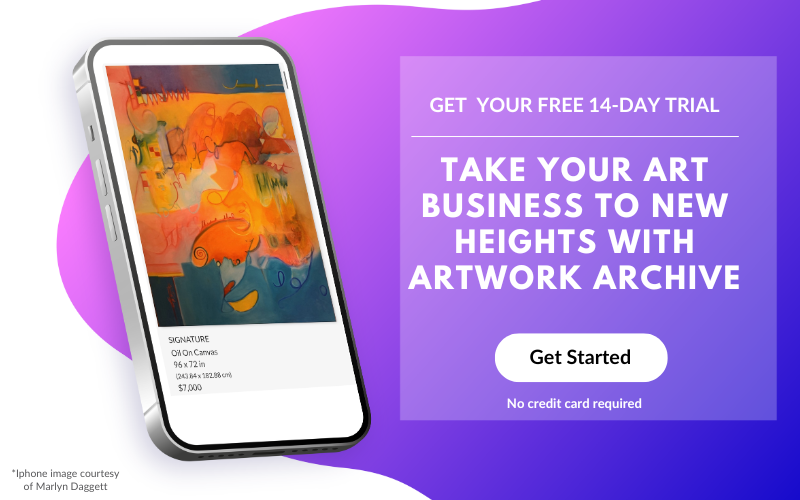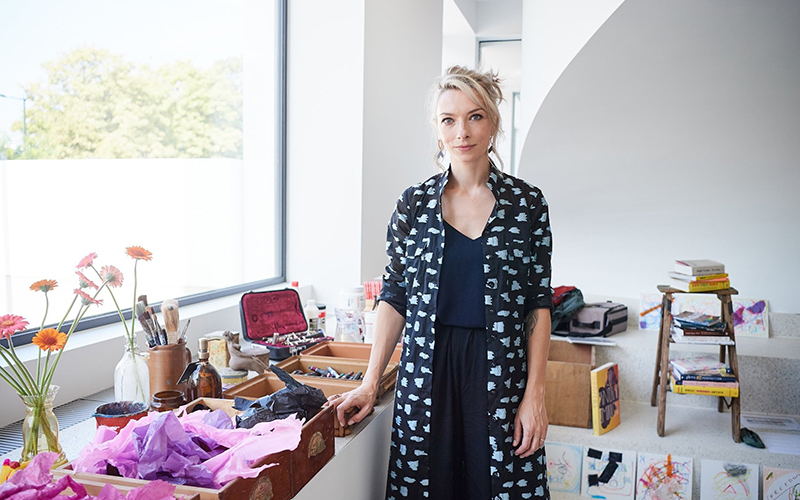 For globetrotting artist Nicky Myny, having an easy way to store her notes and notebooks has been transformational.
For globetrotting artist Nicky Myny, having an easy way to store her notes and notebooks has been transformational.
Keeping a notebook is one of the most important things an artist can do—for their creativity and their health.
That’s something that portrait artist Nicky Myny learned the hard way: “When I faced illness,” she explains, “creativity became my medicine, helping me heal not only my body but also my spirit.”
These days, Myny describes herself as a healing artist, taking the lessons she learned in her own journey and sharing them with audiences around the world. She divides her time between South Africa and Belgium, and through her workshops and trainings, she guides people to discover the powerful effect that art can have in their lives. “I help people find their joy” she explains, “through intuitive art unlocking self-expression, personal growth, and meaningful connection.”
But as an artist who splits her practice across two continents—and is constantly traveling for exhibitions, workshops, and more—Myny needed a way to keep track of that vital heartbeat of her practice—her notebooks.
That’s where Artwork Archive entered her creative life.
“One of the unexpected benefits I've discovered while using Artwork Archive is the ability to centralize all my artist notes," she shares. "This feature has become an invaluable part of my creative process, helping me organize and connect my thoughts directly to each piece of artwork."
In this installment of our Art Business Diaries series, read on for Myny's full Artwork Archive review—plus, how she keeps meticulous artist notes to fuel her creativity, build connections with her collectors, and keep her sane and healthy amidst a thriving artistic practice.
The importance of keeping an artist’s notebook.
So many artists rely on physical notebooks to capture fleeting ideas, document inspirations, and track the evolution of their work. It’s a way of starting a dialog with your inner self, to learn what’s driving your work and how you can deepen your practice. These tangible records serve as both archive and catalyst for creative development. But for an internationally mobile artist like Myny, physical notebooks presented significant challenges.
“I chose to start using an art inventory platform like Artwork Archive because I needed a reliable and efficient way to manage the growing complexity of my art business,” Myny explains. “Before Artwork Archive, I relied on a combination of spreadsheets, physical records, and disjointed digital files.”
The drawbacks to not keeping organized records was clear: “This method was not only time-consuming but also prone to errors and inconsistencies.”
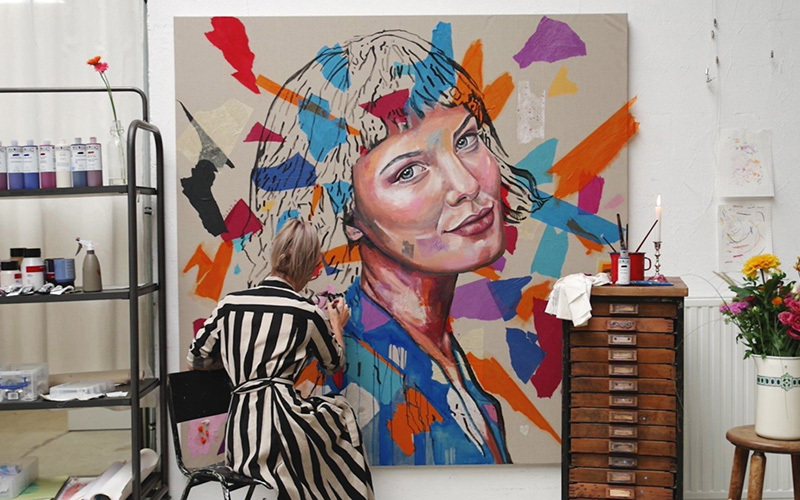 Getting her notes organized in Artwork Archive has allowed Nicky to spend more time making work.
Getting her notes organized in Artwork Archive has allowed Nicky to spend more time making work.
Then there was the risk of loss or damage during travel. Important notes might be left behind in another country. The sheer weight and space requirements of multiple notebooks became a practical burden. Most critically, the fragmentation of ideas across different physical locations made it difficult to maintain continuity in her artistic thinking.
"Writing out my thoughts is a significant part of my creative process,” Myny explains. So as she began traveling more frequently, Myny started using Artwork Archive as the final repository for all the notes and thoughts that she collects throughout her life. When she creates a record for a painting in Artwork Archive, she will use the private Notes field to keep track of what she is thinking about while she makes the painting. When the piece is done, she will fill out the public Description field with insights into the creative process and what drove her to create the painting.
Ready to Create Your First Piece Record?
Creating a detailed record of an artwork is easier than you might think in Artwork Archive. Follow our detailed guide to see all the different options you have for customizing your piece record to your exact needs.“Having all my notebooks and artist notes safely stored and accessible online eliminates the need to carry physical notebooks in my luggage," Myny explains, adding: “Knowing that I can access these notes anytime, anywhere, provides peace of mind and continuity in my work.”
The Artwork Archive platform also makes data safety a top priority, preventing data loss with daily backups and the industry's top server architecture. Any digital notes you add to your account are stored in a cloud-based system that eliminates the risk of losing irreplaceable creative documentation through physical damage, loss, or theft.
Build a creative archive for your work that grows with you as an artist.
For Myny, the digital centralization of her notes has another significant benefit: it creates an ever-growing archive of her creative development that becomes increasingly valuable as her practice grows. Ideas that might have been forgotten in the pages of an old notebook remain easily accessible, allowing themes and concepts to resurface and find new expression in her work.
"This centralized note-taking system ensures that no valuable insights are lost, and it allows me to reflect on and revisit past ideas easily," she explains. "Over time, this collection of thoughts becomes a rich resource that informs and inspires new creations."
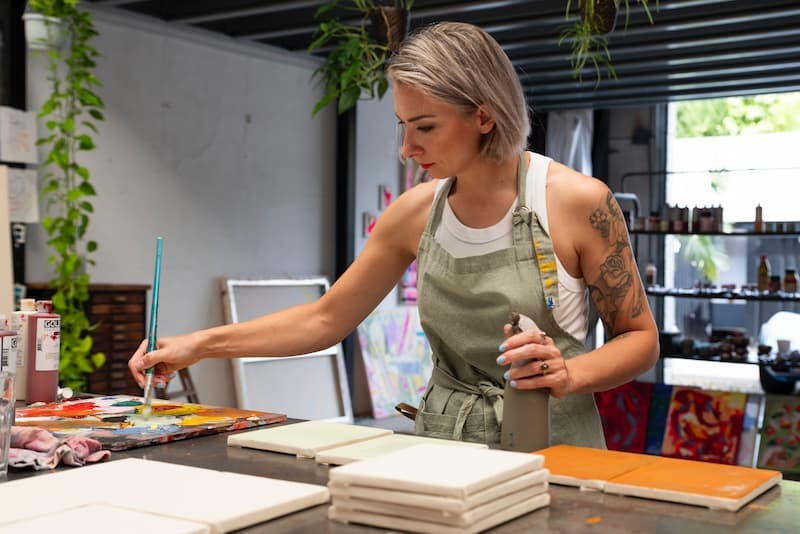 You never know when inspiration will strike, and Nicky is now prepared to note down thoughts as they occur to her.
You never know when inspiration will strike, and Nicky is now prepared to note down thoughts as they occur to her.
Detailed notes can make art collectors take a second look.
Perhaps most surprisingly, what began as a practical solution for a traveling artist has evolved into a powerful tool for connecting with collectors on a deeper level.
"By attaching detailed notes about the inspiration, context, and meaning behind each piece, potential buyers can dive deeper into my artistic journey," Myny explains. "This added layer of insight often resonates with collectors, making the artworks more personal and compelling."
How Nicky Myny uses the Description field in Artwork archive:
See how Nicky Myny uses the public Description field to add detailed information about how an artwork came to life, who the subject is, and what ideas and inspirations Myny was working with as she created the piece. Such detailed, thoughtful reflection on her process provides another way for collectors to become interested in her work.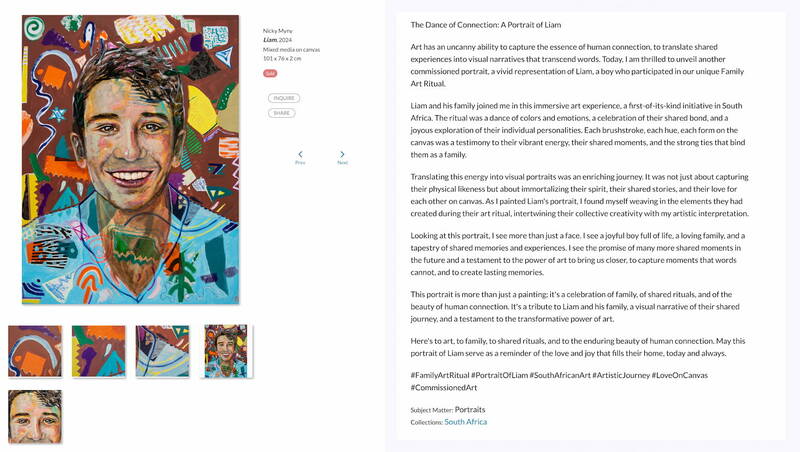
This transformation of private creative notes into shareable stories changes the relationship between artist, artwork, and collector. The notes provide context that might otherwise remain unknown, creating a more meaningful connection to the work.
"When a potential buyer shows interest in a particular piece, I can provide them with comprehensive background information that includes where and when the artwork was created, as well as the underlying motivation and thought process," she elaborates. "This depth of connection can enhance their appreciation of the piece and potentially influence their decision to purchase."
Sell your artwork with a story.
Now that Myny is using Artwork Archive to store both her notes and the complete inventory of her work, she is also reaping the other benefits that come with the platform.
“Artwork Archive has been instrumental in managing the business side of my art practice, Myny explains. “I can quickly generate reports, sales invoices, and exhibition labels without having to sift through multiple files or documents.”
Myny uses Artwork Archive’s Contacts tool to stay in touch with collectors, galleries, and curators. “I can log communications, schedule follow-ups, and track sales history, which is invaluable for building and nurturing relationships,” she explains, “ensuring that I never miss an opportunity to connect with potential buyers or maintain existing relationships.”
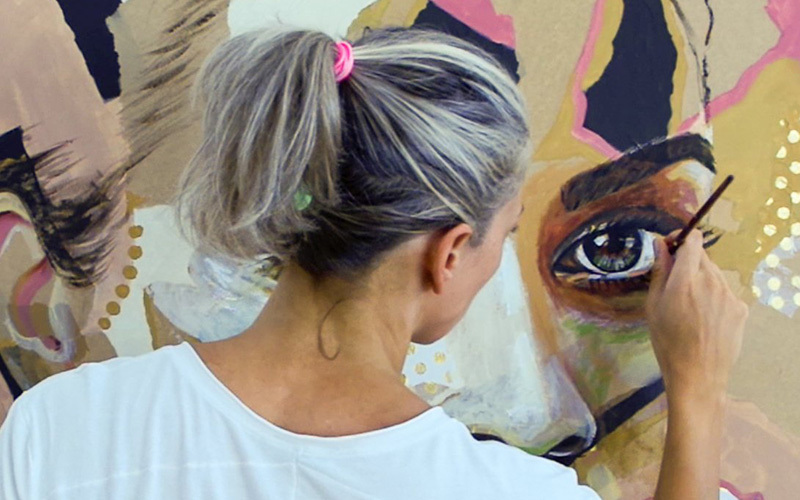 Nicky now makes it as easy as she can for a collector to find out the backstory to her paintings.
Nicky now makes it as easy as she can for a collector to find out the backstory to her paintings.
She also uses the Public Profile feature to embed her work on her personal website. “The Public Profile is a visually appealing and easily navigable platform that showcases my work in its best light,” she shared. “By having all my artworks, along with detailed descriptions, high-resolution images, and artist notes, readily accessible online, I can quickly share my portfolio with interested parties.”
Top Tips for Artists Looking to Implement a Digital Note System
Myny has now been using Artwork Archive’s notes for eight years, and has a few words of advice for artists looking to build a system of notes that can feed your creative practice:
- Start Documenting Your Work Now: "Put in the data ASAP. One of the most important actions you can take is to input all relevant data into your management system as soon as possible." This applies particularly to creative notes, which might otherwise be forgotten if not recorded promptly.
- Create Useful Connections: Rather than treating notes as separate from artwork, Myny ties them directly to specific pieces. This creates a web of connections between thoughts and physical creations that enriches both. “By having all this data centralized in one place,” she explains, “I can easily keep track of my entire portfolio, ensuring that nothing gets lost or overlooked.”
- Think Beyond Text: Digital notes can include more than just written reflections. They can incorporate reference images, color swatches, technique experiments, and other multimedia elements that provide a more comprehensive record of the creative process.
- Consider Future Audiences: While artist notes begin as private reflections, considering how they might eventually communicate to others—curators, collectors, or gallery owners—can enhance their ultimate value. Including context that might interest these audiences creates notes that serve both personal creative development and professional presentation.
Keep track of your artistic journey and you’ll be surprised how far you can go.
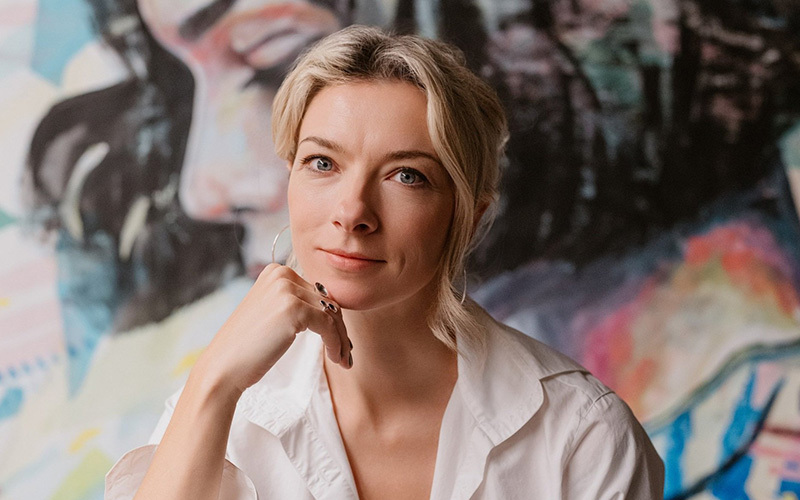 With Artwork Archive, Myny has started sharing more of her work with the world—and selling more!
With Artwork Archive, Myny has started sharing more of her work with the world—and selling more!
For Myny, the ultimate benefit of her digital note system is the freedom it provides. No longer tethered to physical notebooks or worried about losing access to important creative documentation, she can fully embrace the mobile nature of her international practice.
“There is a noticeable ‘before and after’ effect when it comes to using Artwork Archive,” Myny shared with us. “The artworks I created before implementing the platform were often forgotten or left collecting dust in storage.”
But after investing the time and energy into creating her inventory, and adding detailed notes for collectors and curators to her public profile, she notices a clear change: “the pieces I've catalogued are regularly taken out of storage because people who see them online request to view them in person.”
"The benefits of keeping detailed notes might not be immediately obvious to other artists at first,” Myny advises, “but they offer profound advantages in terms of organization, accessibility, and connecting more deeply with potential buyers."
